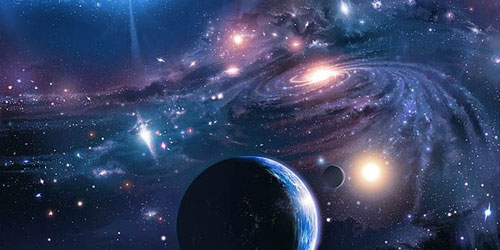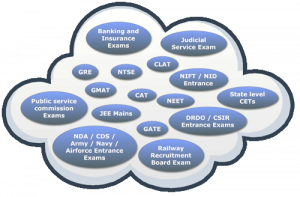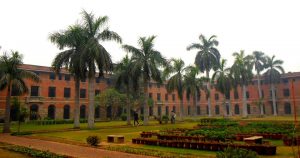Best Books to Read in 2023
Best Books to Read in 2023 Are you a bookworm or a bibliophile, if yes, then this is the ...
PRL JRF 2020, Physical Research Laboratory (PRL) has invited applications for selecting highly motivated candidates to join as junior research fellows (JRF) in it.
PRL JRF 2020 is all about eligible candidates joining the established organisation to take up research in various topics related to science. PRL is a premier national research institution under the aegis of the Department of Space, Government of India.
 Astronomy and Astrophysics, Solar Physics, Space & Atmospheric Sciences, Atomic & Molecular Physics, Optical Physics, Astrochemistry, Theoretical Physics, Geosciences, and Planetary Sciences are the subjects related to which candidates will be taking up research upon selection for PRL JRF 2020.
Astronomy and Astrophysics, Solar Physics, Space & Atmospheric Sciences, Atomic & Molecular Physics, Optical Physics, Astrochemistry, Theoretical Physics, Geosciences, and Planetary Sciences are the subjects related to which candidates will be taking up research upon selection for PRL JRF 2020.
The candidates selected as PRL JRF 2020 will be joining the organisation in July 2020 and can take up research work in any one of the topics related to the above mentioned subjects. collegechalo brings the topics related to these subjects where candidates can take up research.
Astronomy and Astrophysics
Instrumentation and stellar astrophysics and exoplanet research, Flow of Astrophysical plasma, Numerical simulation, Particle acceleration in space plasma, X-ray/Infrared/Optical studies of Be/X-ray Binaries (Physics stream).
Understanding the properties of X-ray pulsars at different luminosity levels, Understanding cluster formation in molecular cloud complexes, Astronomical polarimetry, milky way studies, astronomical instrumentation.
Solar Physics
Seismic coupling in the solar atmosphere, Connection between solar interior dynamics and solar activity, Role of Magnetohydrodynamic waves in the coronal heating. Small-scale transients in the solar atmosphere Initiation and propagation of coronal mass ejections, Space Weather effects of solar eruptions.
Space and Atmospheric Sciences
Trace gases in the Earth’s atmosphere, Emission and atmospheric processes of volatile organic compounds (VOCs), Atmospheric Chemistry and Climate Modeling, Earth’s lower and middle atmospheric remote sensing and coupling processes.

LIDAR, RADAR and Satellite based studies of atmospheric temperature, clouds and water vapor, Atmospheric Aerosols, Investigation of atmospheric waves and middle atmospheric dynamics using ground and satellite-based observations.
Investigations of ionospheric thermospheric intereactions using radio and optical techniques, Impact of space weather on the terrestrial magnetosphere-ionosphere (MI) system, Climate Change and Global Warming.
Atomic, Molecular and Optical Physics
Quantum Optics, Quantum Communication, Quantum Metrology and Quantum Sensing, Laboratory astrochemistry, astrobiology, Probing the ultrafast dynamics in atoms and molecules.
Nonlinear Optics, Quantum Optics, Structured Optical beams, Theoretical atomic studies on Parity and Time Reversal Symmetry Violations, Atomic Clocks, Isotope Shifts, Hyperfine Structures, Lande gj factors, Plasma embedded atomic systems, Relativistic Theory for Heavy Molecules.
Development of exoelectron system and its application, Development of luminescence as a tool for provenance studies, extending the dating limits of luminescence technique.
Geosciences
Mantle Geochemistry, Geoarcheology, and study of Early Earth, Biogeochemistry of bio-available elements and their isotopes in different ecosystems, Ocean biogeochemistry and climate change.
Isotope hydrology, Ocean acidification using corals, Paleoclimate and monsoon variability using marine/lake sediments, Radiocarbon and ocean circulation.
Aerosol chemistry and characteristics, Atmospheric deposition of nutrients, Precipitation chemistry
Catastrophic events (mass extinctions) across major geological transitions.

Planetary Sciences
Physics, Dynamics and Composition of Planetary Atmospheres. Dust storms and convective vortices on Mars, Modeling of Planetary Atmospheric Chemistry, Modeling and Observation of Interplanetary Dust Particles (IDPs) at Various Planets, Micrometeorites on Airless Bodies like Moon, Dust Charging and Levitation on Small Airless Body, Dusty Plasma, Planetary Lightning: Modelling and Observation of Lightning on Various Planets like Venus, Mars etc. and its effect on the Atmosphere,
Electromagnetic Wave Propagation, Study of Planetary materials and Terrestrial Impact craters, Impact craters and their associated fluvial activities on Mars, Role of impact craters in Lunar evolution post-Late Heavy Bombardment, Exploring Impact cratering on planetary bodies (Mars/Moon), their terrestrial analogues and through experimental analysis.
Geological evolution of Mars using remote sensing data analysis, Evolution of the lunar crust, Development of new techniques for hyperspectral/multispectral remote sensing data analysis, Comparative geology of airless planetary bodies, Reflectance spectroscopy of planetary materials and analogues under laboratory simulated conditions, Planetary Geophysics and Heat flow Studies, Instrumentation for Planetary Exploration.
Also Read – Know how to apply for PRL JRF 2020
Planetary Geology & Geochemistry, Quaternary Geochronology and Quaternary paleoclimates, Organics in meteorites, Stellar Nucleosynthesis from an experimental perspective, Early active Sun and Short-lived nuclide studies in meteorites, Secondary alterations in the protoplanetary disk, Presolar grains morphological interests.
Optically stimulated luminescence, gamma-ray spectrometer development. Instrumentation for Planetary Exploration, Study of the hydrodynamical and chemical evolution of the star Planet-forming regions using numerical simulations and laboratory experiments.
Theoretical Physics
Neutrino Physics phenomenology (Probing Neutrino Oscillation Parameters in current and future experiments, Nature of neutrinos and its connection with neutrino mass generation mechanism).
Theoretical investigation of anomalous electronic transport in a strange metal regime of unconventional superconductors, Theoretical investigation of unconventional magnetism in strongly correlated systems.
Particle Physics Phenomenology at Large Hadron Collider (LHC), Higgs, Supersymmetry, Dark Matter and Physics beyond the Standard Model. Ultra cold atomic physics, Effective Field Theory and Flavour Physics.
Points to remember
Candidates getting selected to PRL JRF 2020 must be 28 years old as on the last date of the application submission which is 30 April.
The interview venue for candidates selected to PRL JRF 2020 is PRL’s office premises at Ahmedabad. Candidates willing to apply for PRL JRF 2020 must do it online.
The fellowship amount for candidates selected for PRL JRF 2020 is Rs 31,000 per month.
S Vishnu Sharmaa now works with collegechalo.com in the news team. His work involves writing articles related to the education... (Full bio)

Best Books to Read in 2023 Are you a bookworm or a bibliophile, if yes, then this is the ...

In the exhilarating journey of 10 Proven Memorize Techniques for Students learning, memory is your trusty companion. Whether ...

Top 20 toughest exams in world is about exams in the world that required very hard work to ...

Top 20 toughest exams in India - Exams are the perhaps most toughest moments for any student. A ...

Top 20 Colleges of DU Getting admissions to the top 20 colleges of DU is a dream for every ...

Top 20 NITs of India - Amongst the 31 NITs in India, today, we are talking ...

Here are the Top 12 Artificial Intelligence in Mumbai. Artificial intelligence (AI) refers to the simulation of human ...

As you stand on the Best Science Courses after 12th academic journey, the realm of science beckons, offering ...
Millions of students have entrusted CollegeChalo to facilitate their seamless and smooth admission process to their dream colleges and universities. With CollegeChalo, you can gain a competitive edge by easily accessing exam and course details to stay ahead of the admission journey. What are you waiting for?
Search your dream college